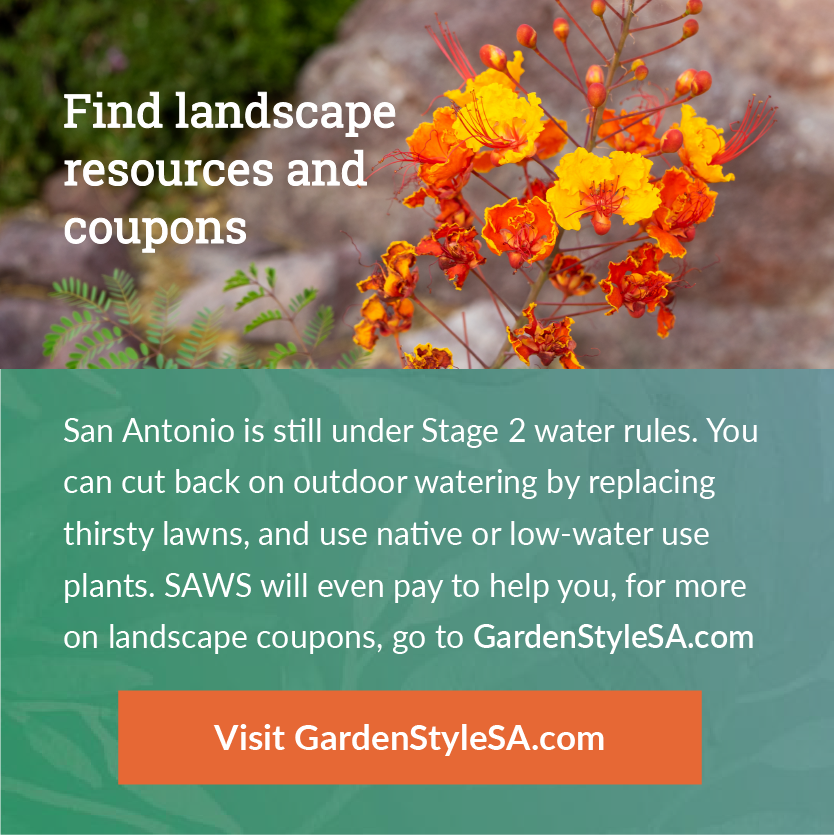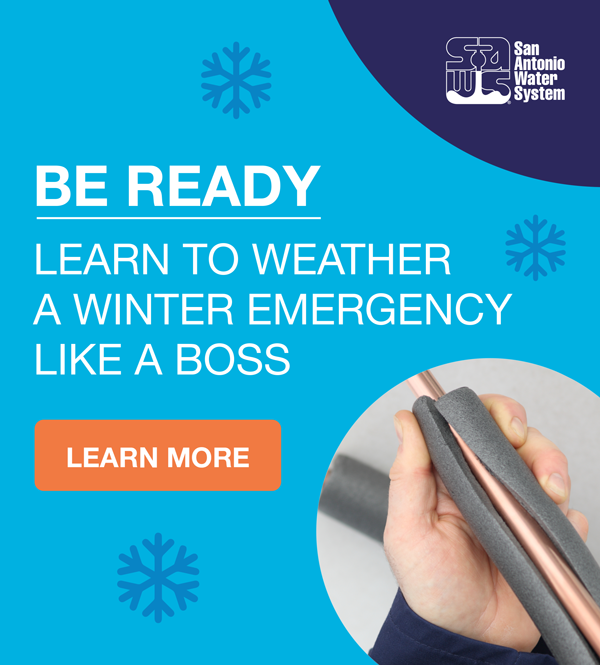
Stage 2 restrictions begin when the 10-day rolling average of the Edwards Aquifer level reaches 650 feet mean sea level at the monitored well. Coming out of drought stages can be considered 15 days after the aquifer is above the trigger.
- All restrictions from Stage 1 remain in effect unless added to or replaced by Stage 2 rules.
- Landscape watering with an irrigation system, sprinkler or soaker hose is allowed only once a week from 5-10 a.m. and 9 p.m.-midnight on your designated watering day, as determined by your address.
- Watering with a hand-held hose is allowed any time on any day.
- Watering with drip irrigation is permitted Monday/Friday, but only 5-10 a.m. and 9 p.m.-midnight.
- All residential fountains and indoor commercial fountains can operate at any stage of drought.
- Outdoor commercial fountains must have a SAWS variance in order to operate during drought stages 1 through 4.
- Washing impervious cover such as parking lots, driveways, streets or sidewalks is prohibited. Health and safety exceptions to this rule may be requested from SAWS here.
- Residential car washing allowed during drought once per week on Saturday or Sunday as long as there is no water waste.
- The use of SAWS-certified commercial car wash facilities is allowed any day.
- Operators of golf courses, athletic fields, and parks must submit a conservation plan to SAWS. For requirements, contact SAWS at 210-704-SAVE. Golf courses, athletic fields, and parks may not irrigate between 11 a.m. and 7 p.m.
- Hotels, motels, and other lodgings must offer and clearly notify guests of a “linen/towel change on request only” program.
And don’t forget to follow these year-round rules:
- Water waste is prohibited at all times. This includes lawn watering overspray and runoff.
- Restaurants may serve water only on request (to reduce dishwashing).
- Charity car washes allowed only at commercial car wash facilities.
LANDSCAPE WATERING
Landscape watering with an irrigation system, sprinkler or soaker hose is allowed only once a week from 5-10 a.m. and 9 p.m.-midnight on your designated watering day, as determined by your address.
Areas without a street address, such as medians and neighborhood entryways, water on Wednesday.
Set Sprinklers for Savings
Summer sizzle and bone-dry conditions may have you reaching for the hose or irrigation controller, but too much outdoor watering can soak your water bill.
The average irrigation system uses 2,000 gallons each time it runs. Running your irrigation system twice a week can more than triple your water bill. The more you water, the higher your water bill.
Don’t get soaked (or shocked) by a high bill! Schedule a FREE irrigation consultation and we’ll help you set a personalized irrigation schedule that matches your landscape’s water needs.
Reduce Your Summer Water Bills
The use of treated wastewater or recycled water for irrigation is allowed – without waste – any day during the restricted hours if the customer has posted proper signage approved by SAWS. Stage 2 restrictions continue until there is an announcement in the newspaper that Stage 2 has been canceled or that Stage 3 is in effect.


